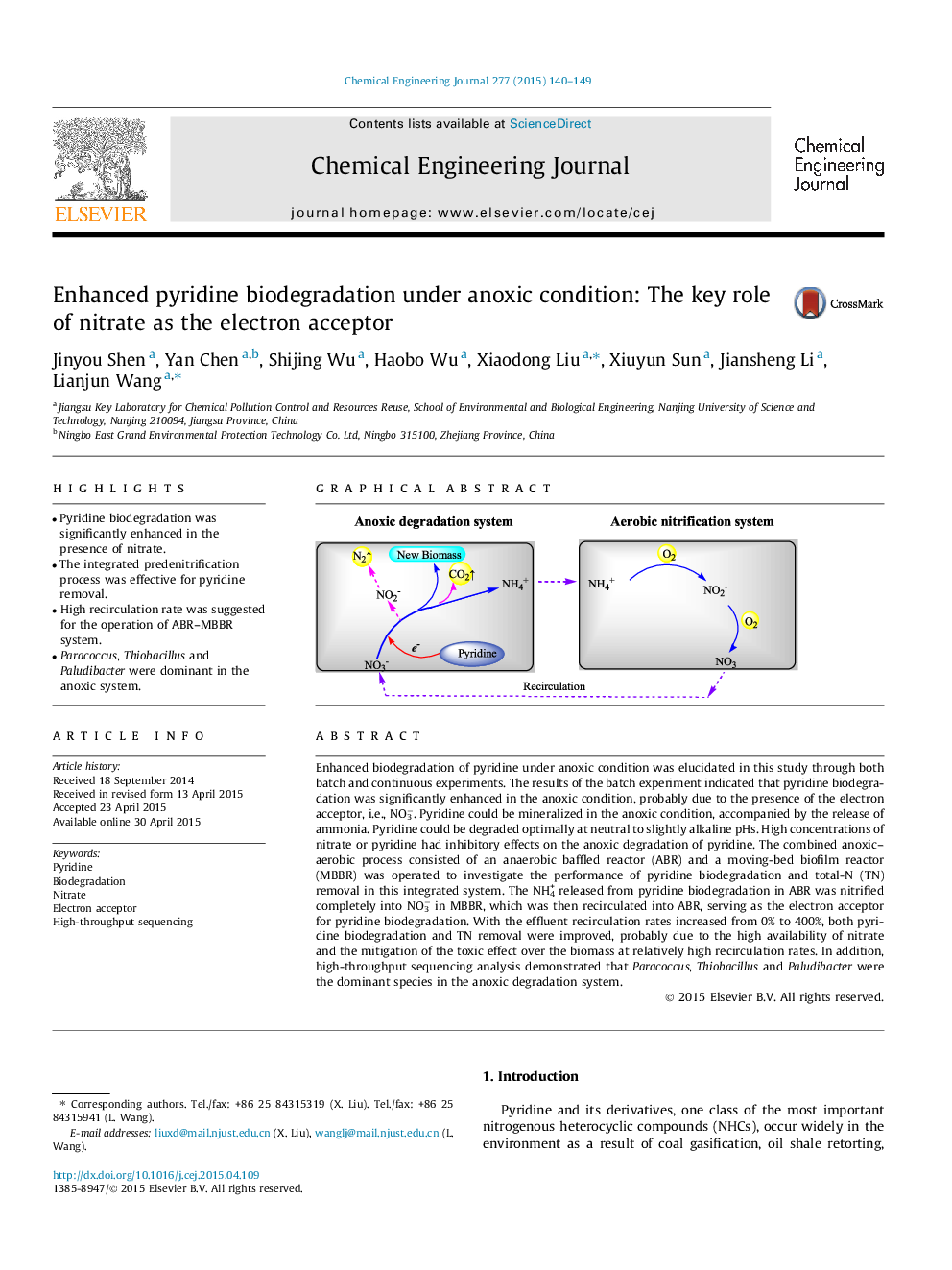| کد مقاله | کد نشریه | سال انتشار | مقاله انگلیسی | نسخه تمام متن |
|---|---|---|---|---|
| 146310 | 456367 | 2015 | 10 صفحه PDF | دانلود رایگان |
• Pyridine biodegradation was significantly enhanced in the presence of nitrate.
• The integrated predenitrification process was effective for pyridine removal.
• High recirculation rate was suggested for the operation of ABR–MBBR system.
• Paracoccus, Thiobacillus and Paludibacter were dominant in the anoxic system.
Enhanced biodegradation of pyridine under anoxic condition was elucidated in this study through both batch and continuous experiments. The results of the batch experiment indicated that pyridine biodegradation was significantly enhanced in the anoxic condition, probably due to the presence of the electron acceptor, i.e., NO3−. Pyridine could be mineralized in the anoxic condition, accompanied by the release of ammonia. Pyridine could be degraded optimally at neutral to slightly alkaline pHs. High concentrations of nitrate or pyridine had inhibitory effects on the anoxic degradation of pyridine. The combined anoxic–aerobic process consisted of an anaerobic baffled reactor (ABR) and a moving-bed biofilm reactor (MBBR) was operated to investigate the performance of pyridine biodegradation and total-N (TN) removal in this integrated system. The NH4+ released from pyridine biodegradation in ABR was nitrified completely into NO3− in MBBR, which was then recirculated into ABR, serving as the electron acceptor for pyridine biodegradation. With the effluent recirculation rates increased from 0% to 400%, both pyridine biodegradation and TN removal were improved, probably due to the high availability of nitrate and the mitigation of the toxic effect over the biomass at relatively high recirculation rates. In addition, high-throughput sequencing analysis demonstrated that Paracoccus, Thiobacillus and Paludibacter were the dominant species in the anoxic degradation system.
Figure optionsDownload as PowerPoint slide
Journal: Chemical Engineering Journal - Volume 277, 1 October 2015, Pages 140–149
